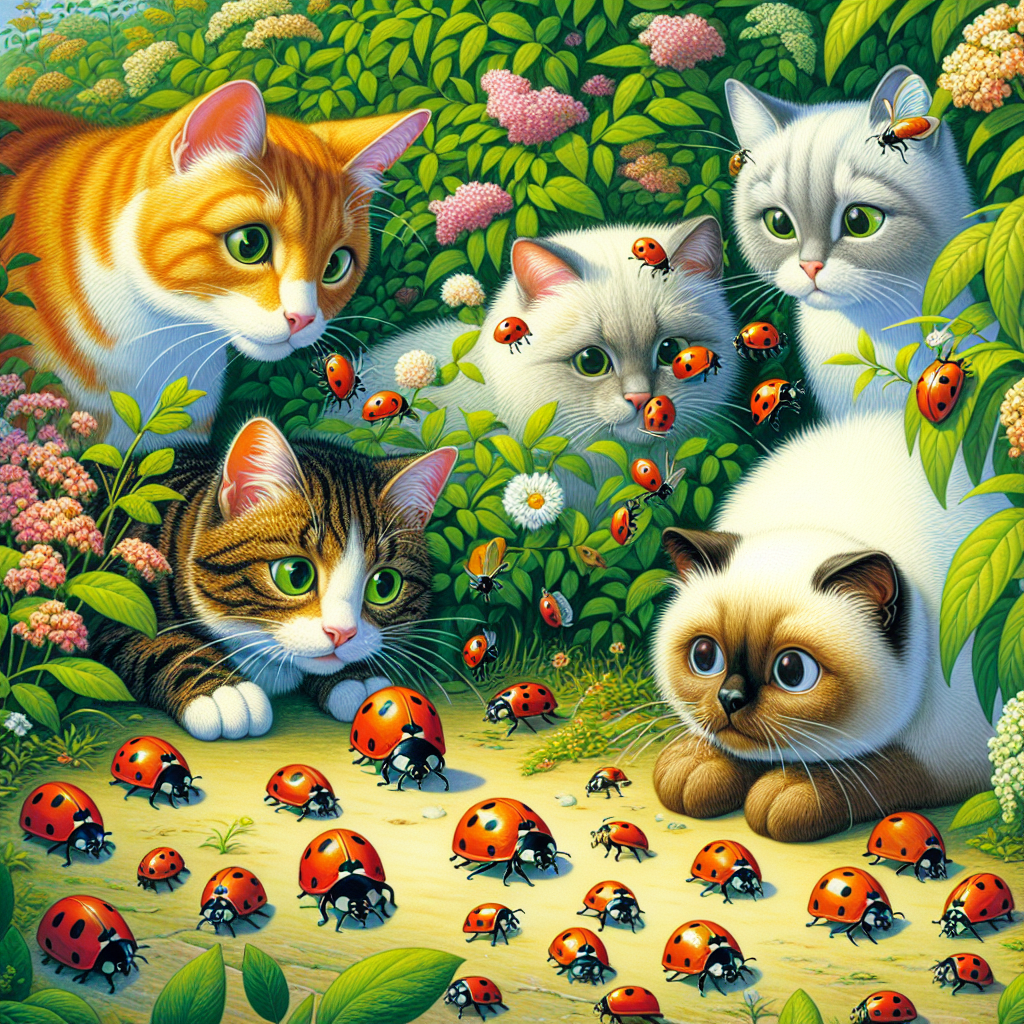===INTRO:===
When cats encounter ladybugs, an intriguing dietary exploration unfolds before our eyes. Pet owners often wonder about this peculiar behavior, observing their furry companions entranced by the little beetles. This scenario raises essential questions about feline dietary habits and health implications. Understanding these interactions is crucial, especially for cat guardians concerned about their pet’s wellbeing.
Cats are natural hunters, and their instinctual drive to chase and capture small creatures can lead them to ladybugs. However, this fascination can be a source of anxiety for pet owners who worry about potential consequences. By delving into the dynamics of feline curiosity towards ladybugs, we can illuminate what happens when these two worlds collide.
As we explore this captivating subject, we aim to uncover the reasons behind this curiosity, the nutritional aspects of ladybugs, and what cat owners should keep in mind. Through an in-depth analysis, we will equip you with knowledge that not only addresses your concerns but also enhances your understanding of your feline friend’s natural behaviors.
Understanding Feline Fascination with Ladybugs: An Insight
Cats are often described as enigmatic creatures, and their fascination with ladybugs is a testament to their complex nature. Cats are instinctual hunters, and the bright colors and erratic movements of ladybugs provide a stimulating target. This behavioral pattern is not merely a whimsical pastime; it taps into their predatory instincts, allowing them to engage in the chase—a key element of their natural hunting behavior.
In a world dominated by domestication, many cats still exhibit the hunting behaviors of their wild ancestors. The sight of a ladybug darting around triggers a response reminiscent of chasing prey. This movement captures their attention, stimulating both their vision and their curiosity. It is not uncommon to witness a cat’s playful pounce, a reminder that even indoor cats retain their primal essence. Understanding this behavior can enhance the bond between owner and pet, providing insights into how to create a more enriching environment for our feline friends.
Moreover, this interaction can serve as an educational moment. Observing your cat’s engagement with ladybugs can offer insight into what captivates them, fostering a deeper appreciation for their natural inclinations. By providing alternative interactive toys or nature-inspired activities, cat owners can channel this fascination into healthy play, ensuring their cats remain stimulated without the potential health risks that come from consuming wild insects.
The Nutritional Implications of Cats Eating Ladybugs: A Study
While it may appear harmless for cats to consume ladybugs, the nutritional implications deserve careful consideration. Ladybugs are not a conventional food source for cats, and their ingestion may lead to unforeseen health consequences. Although ladybugs are not toxic to cats, they can trigger gastrointestinal disturbances. The chitin in the ladybug’s exoskeleton may be difficult for cats to digest, potentially leading to upset stomach or vomiting.
Furthermore, some species of ladybugs contain chemicals that serve as a defense mechanism against predators. These chemicals are generally unharmful to cats when ingested in small amounts, yet they could result in allergic reactions in sensitive felines. As a result, while the occasional nibbled ladybug may not pose a significant threat, consistent consumption could lead to complications. Understanding these factors is essential for responsible pet care; cat owners should monitor their pets’ interactions with ladybugs to prevent any adverse reactions.
Recent studies indicate that cats, as obligate carnivores, thrive on diets rich in animal protein. Insects like ladybugs do provide some protein, but it’s negligible compared to traditional sources such as fish, poultry, or specially formulated cat foods. Therefore, while the curiosity to engage with ladybugs is natural, it does not fulfill any significant dietary requirement. As such, cat owners should ensure that their pets receive a balanced diet, focusing on high-quality sources that meet their nutritional needs.
===OUTRO:===
In conclusion, the phenomenon of cats encountering ladybugs opens a fascinating window into the intricate behaviors and dietary explorations of our feline companions. Understanding their instincts and the potential health implications of consuming ladybugs is vital for any cat owner. By fostering an environment that recognizes and accommodates these natural behaviors, we can enhance our pets’ quality of life.
If you find your feline friend intrigued by ladybugs or other insects, consider engaging them with safe, alternative forms of play that satisfy their hunting instincts. This approach not only safeguards their health but also enriches their daily experiences, creating a more interactive and stimulating home environment. As always, staying informed and proactive ensures that our beloved pets lead healthy, happy lives. So, take a moment to observe your cat’s curiosities—who knows what delightful secrets you might discover?
Measuring Your Dog’s Height: A Comprehensive GuideUnderstanding How Dogs Become Infested with FleasUnderstanding the Lifespan of Pug Dogs: What to ExpectRelevant LinkRelevant LinkRelevant Link
